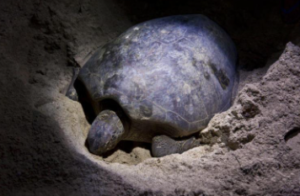
The effect of the moon on our living things and the earth itself is very large. It is now well known that the moon’s coldness affects human hormone balance and moisture balance.
The ebb and flow of the sea are also affected by the gravitational pull of the moon and sun. The creatures in the sea are no exception. Let’s go deeper into the relationship between the moon and living things in this miscellaneous study!
Sea turtles and corals spawn on the night of the full moon.
Why do sea turtles and corals spawn at night when the full moon rises?
What are the advantages of spawning at night when the full moon rises for sea turtles and corals. Let’s take a look at each advantage.
In the case of sea turtles.
First, let’s explain why sea turtles choose the night when the full moon rises due to spawning.
Sea turtles move inward rather than landing points to choose a safe place to spawn. But it’s a turtle. The movement is slow and it takes a long time to get to the spawning ground. Not only does it takes a long time to get there, but it also takes a long time to get there and back.
Let’s see the full moon there.
When the full moon rises, it becomes a big assistant and the assistant is cold. As the tide rises, they can swim near the spawning ground. Of course, returning to the sea after spawning ends significantly faster than when the tide is falling out.
In addition, after the water is drained, it is possible to avoid the addition of extra seawater to the eggs laid and dropped, which is killing two birds with one stone. The sea turtle’s eggs breathe with their shell. If you take a lot of water, you can’t breathe and you can die.
For this reason, sea turtles are more likely to spawn at night when the full moon rises.
In case of coral.
Next, I will explain the convenient reason for coral.
Corals, unlike sea turtles, cannot migrate and spawn on their own. They spawn in the sea and increase their offspring. In that case, how will we prosper our offspring.
Corals spawn at night when the full moon rises due to the wide gap between the tides, leaving their offspring in the flow of the tide and being transported far away.
We cannot help but feel the mystery of life that immobile corals can do so without learning from anyone for co-prosperity.
Continue on page two